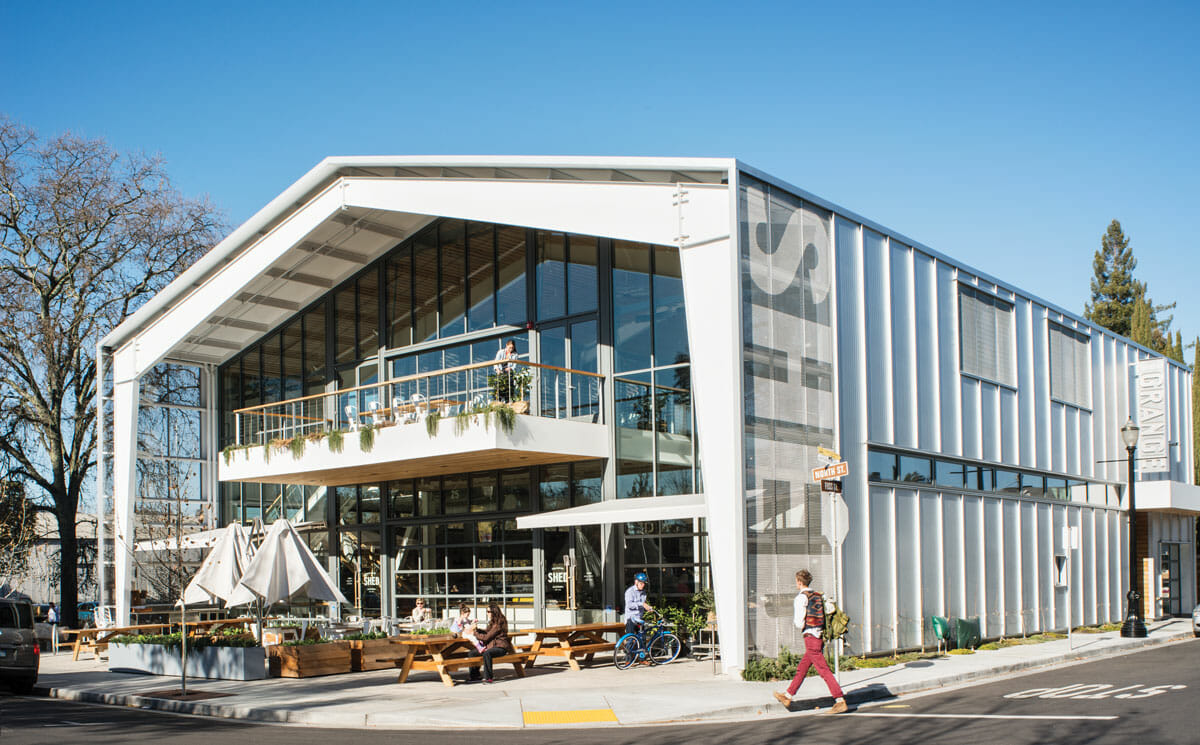Healdsburg's SHED isn't just an artisanal grocery or a farm supply store - it's an illustration of the whole food cycle.

“So, look at this guy. He just flew up from Hollister to buy your bread in his own airplane!” Hollister, in California’s Central Valley, is a three-hour drive away.
It’s true, he says, he’s become addicted to the loaves produced by baker Nathan Yanko (formerly of San Francisco’s beloved Tartine Bakery), and he hitched a ride with his pilot friend to stock up on the stuff.
You could call it a farm store or an artisanal grocery, but neither description really fits.
This is the sort of devotion SHED, which opened in April 2013, has inspired. You could call it a farm store or an artisanal grocery, but neither description really fits. SHED sells produce, but also kitchenware (think beautiful fermentation pots and handmade tortilla presses) and dry goods, such as beans and nuts, garden tools and hand-dyed wool. There’s a coffee bar and a restaurant serving breakfast and lunch. Large windows allow shoppers to watch local flour being ground in the milling room. The fermentation bar serves wine, kombucha, kefir water and shrubs – a traditional carbonated drink made with fruit juices and vinegar, once popular with thirsty farmers. You can sign up to eat a group meal built around an heirloom potato being nursed back from extinction, or take a class on seed saving.
SHED is the brainchild of Daniel and her partner, Doug Lipton. Daniel previously worked in the nonprofit sector and founded a successful retail shop in San Francisco; Lipton is an environmental scientist. Eighteen years ago the two started a farm near Healdsburg, a small wine-country town about 80 minutes north of San Francisco. Their farm has an olive orchard, fruit trees, grapes, flowers, chickens, bees, jujubes and pomegranates. Daniel says she always knew she wanted to do a project around food, and when she began planning SHED, she treated it like her farm, integrating a little of everything.
[mf_mosaic_container columns=”2″ captions=”yes”]
[mf_mosaic_item src=”https://modernfarmer.com/wp-content/uploads/2014/04/shed2.jpg” number=”1″ caption=”Japanese enamel trowels sitting pretty in a bay laurel garden basket.”]
[mf_mosaic_item src=”https://modernfarmer.com/wp-content/uploads/2014/04/shed3.jpg” number=”2″ caption=”The housewares section focuses on handcrafted tools, such as these hardwood spoons and scoops made by a California woodworker.”]
[mf_mosaic_item src=”https://modernfarmer.com/wp-content/uploads/2014/04/shed4.jpg” number=”3″ caption=”The second-floor production kitchen sits adjacent to the Grange Hall, where events range from farmer meetups to Sunday Suppers to various workshops.”]
[/mf_mosaic_container]
Agriculture is central to SHED’s mission. Most of the products sold are sourced from nearby farmers.
“I wanted to do something that illustrated the whole food cycle, from growing to cooking to how food can bring people together, with a whole kind of underlying mission to support and celebrate our local agriculture,” says Daniel.
‘I wanted to do something that illustrated the whole food cycle with an underlying mission to support and celebrate our local agriculture.”
Hence the glass-walled larder, where shoppers can see things pickling in jars or watch meat being sliced. Even the building itself is transparent. The metal, barnlike structure features tall walls of glass that allow sunlight to stream through the building throughout the day. The rolling walls and doors are built so that SHED can be instantly transformed into an indoor/outdoor space.
Another nod to transparency: a small “truth window” that shows the shredded, recycled denim insulating the building.
In the future, Daniel wants to do more to bring consumers and producers face to face – she envisions morning coffee sessions with local farmers, recalling a day when she convened a meeting with those who supply her business.
“It was the end of the day, the sun was coming in,” she says. “It was a beautiful moment, and I went around and talked to all the farmers about what they would be growing. And it was just a simple thing, but this is really what it’s all about to me.”